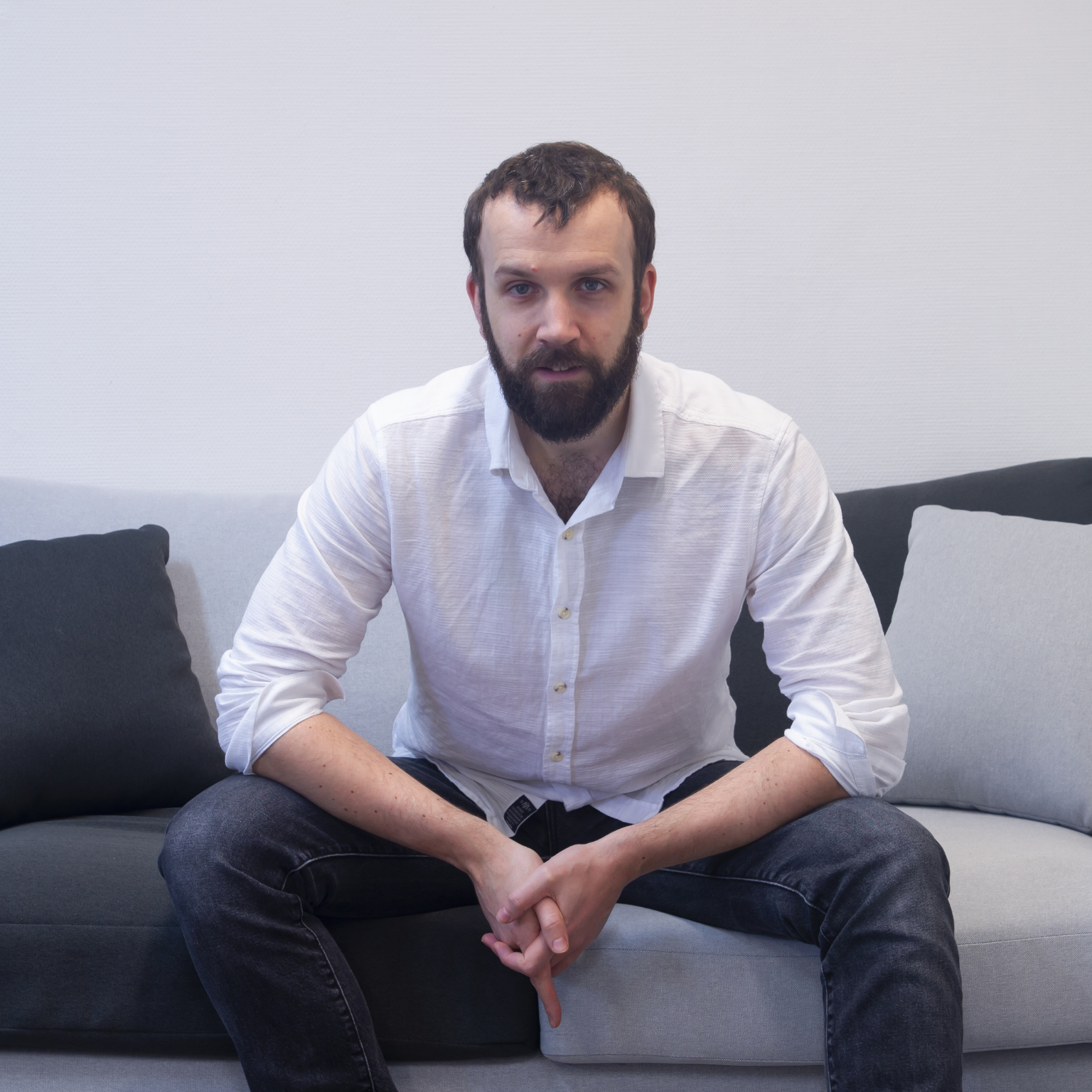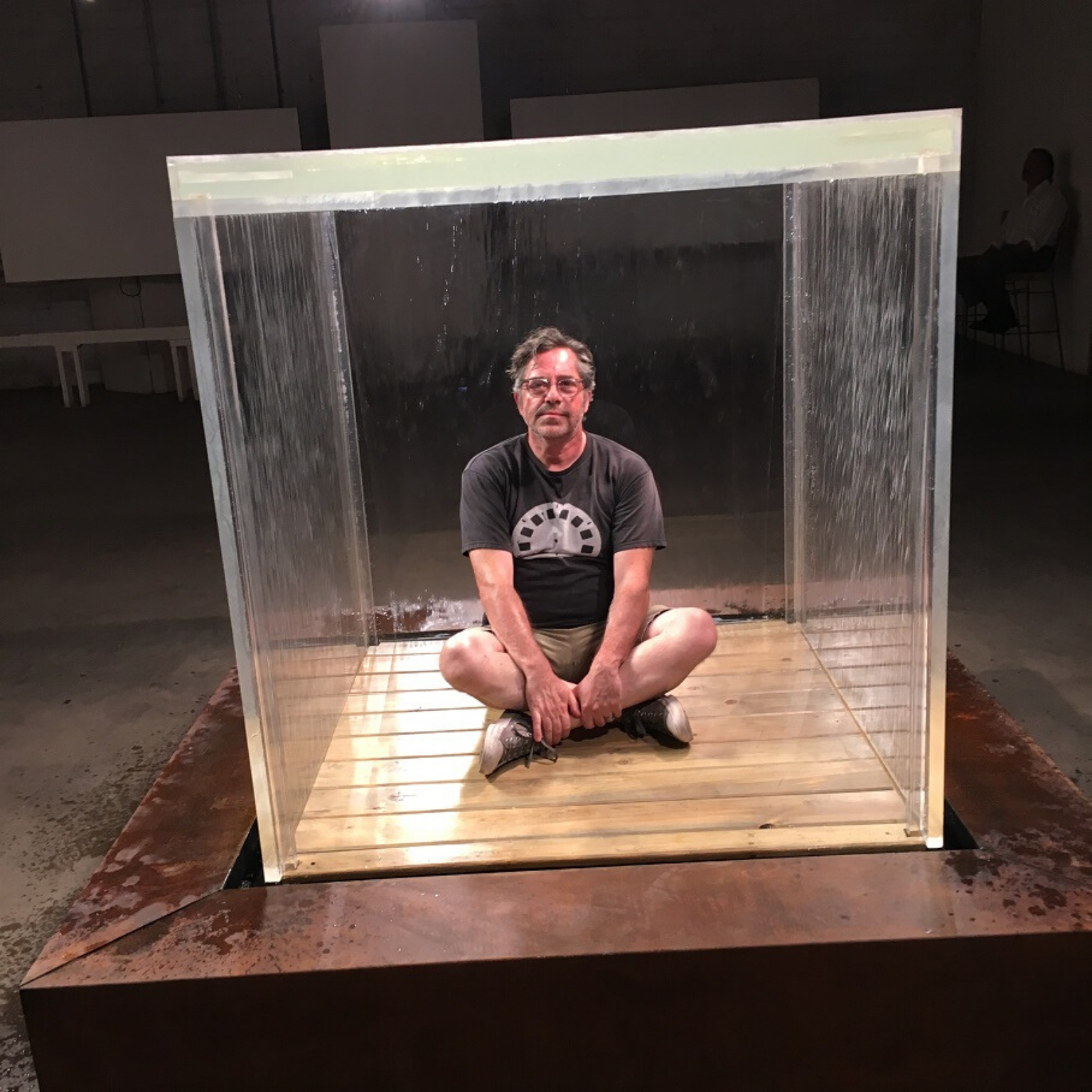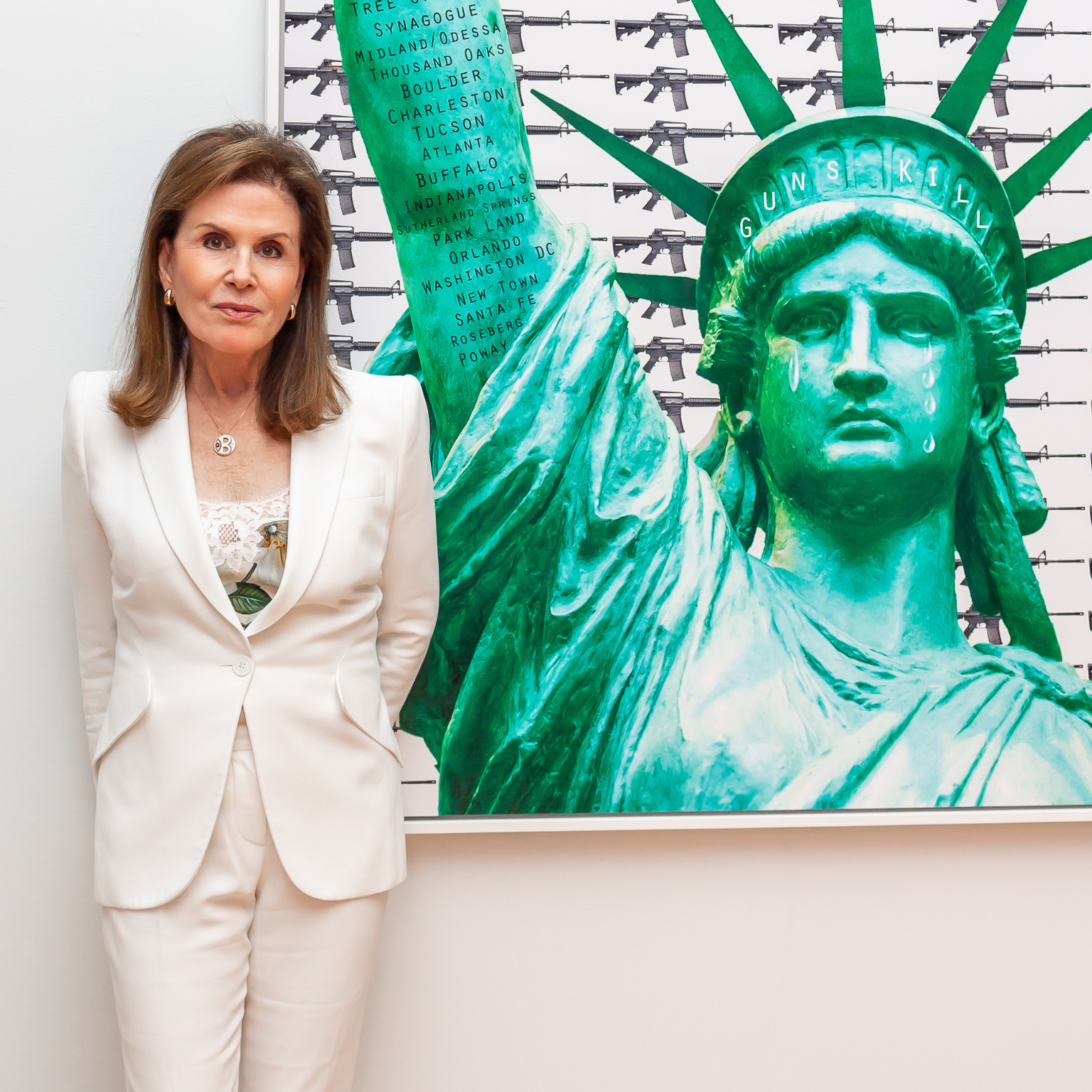Jean-Michel Bihorel, digital artist from France. Photo © Courtesy of the artist
1.Tell us what you do and your beginnings.
I’ve been doing digital art since 2008. First I was working for VFX and animated movies. Which allowed me to gain full control of the digital medium in this very demanding production environment. I refined my skills on many 3D software as well as my taste for detail and realisme. But I always kept a personal production of artworks flowing beside these projects in order to develop my personal universe.
Today I’m also a digital art teacher in a school we created with some colleagues in France 5 years ago. I work sometimes as a creative director and I continue to produce completely personal artworks to refine my vision.
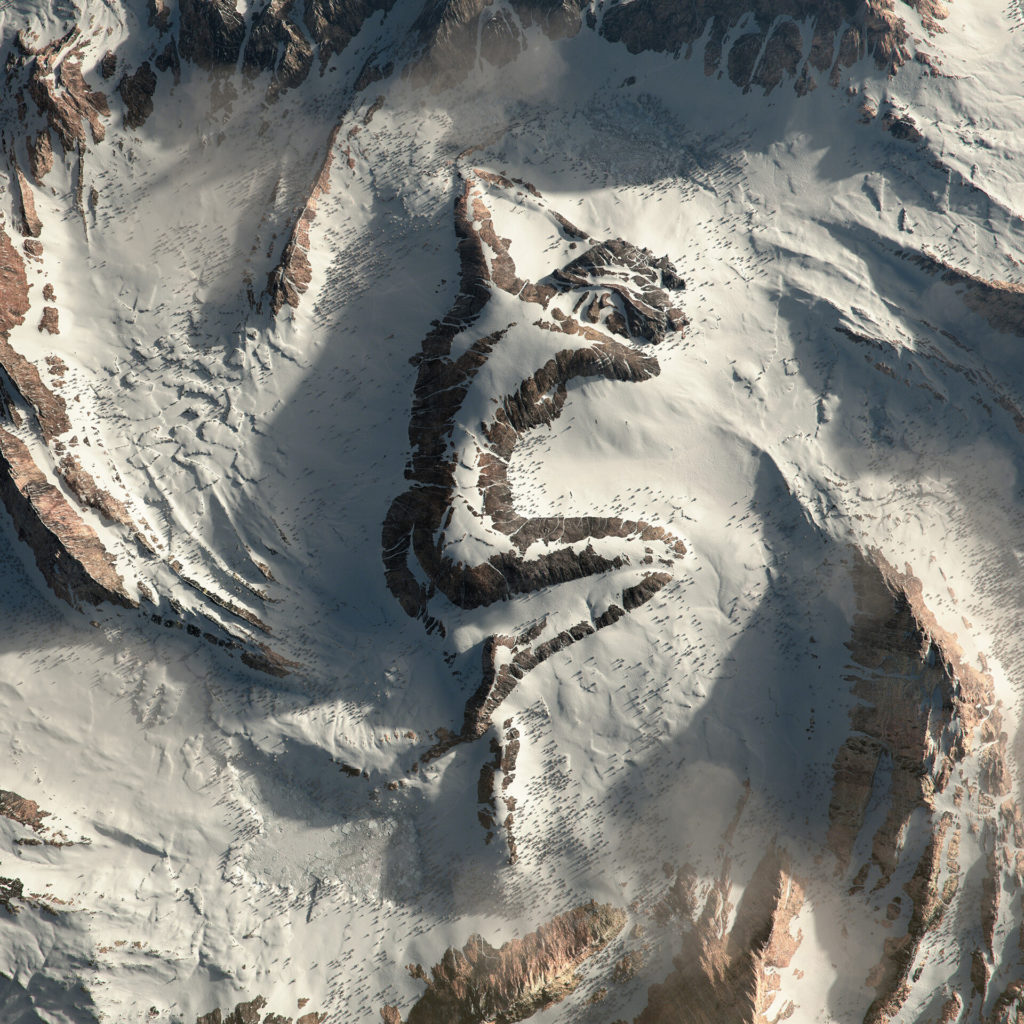
2.What does your work aim to say?
My work does not always aim to say something literally. I am more looking after a feeling, an emotion that the viewer will grab and give his own meaning to. For example, for the artwork “Flower Figures 02”, I wanted to create a contrast between something cold and sharp (the ceramic body) and something soft and warm (the cherry blossom).
Some time after the artwork was released, many women reached out to me to say they felt really connected to this picture, for them it was the symbol of rebirth after breast cancer. After that the picture even made the cover of a magazine writing about sensibilisation about breast cancer.
I didn’t think of that while doing the artwork but now I can’t think of a nicer metaphor for it anymore. Most of my artworks intend to bring calm and positive uplifting feelings to the viewers. If my artwork can be of any help to bring peace or joy to the viewer It’s what would make me feel useful as an artist. My artistic approach led me to anchor my images in a form of visual realism. I also aspire to create a link between the contemporary medium and the traditional know-how on which I was brought up. This mainly involves reproducing the look of traditional materials and details to give visual plausibility to dreamlike subjects.
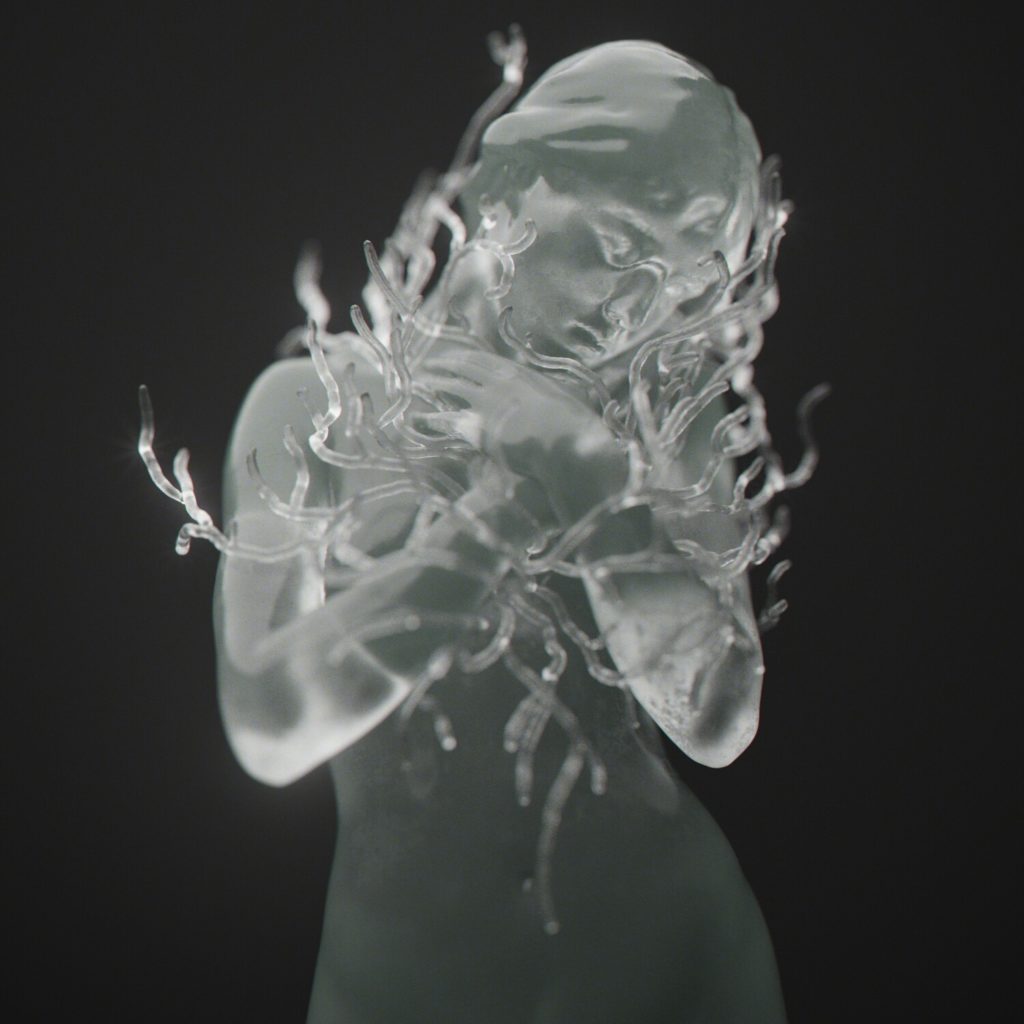
Emotion Streams No 02, 2021 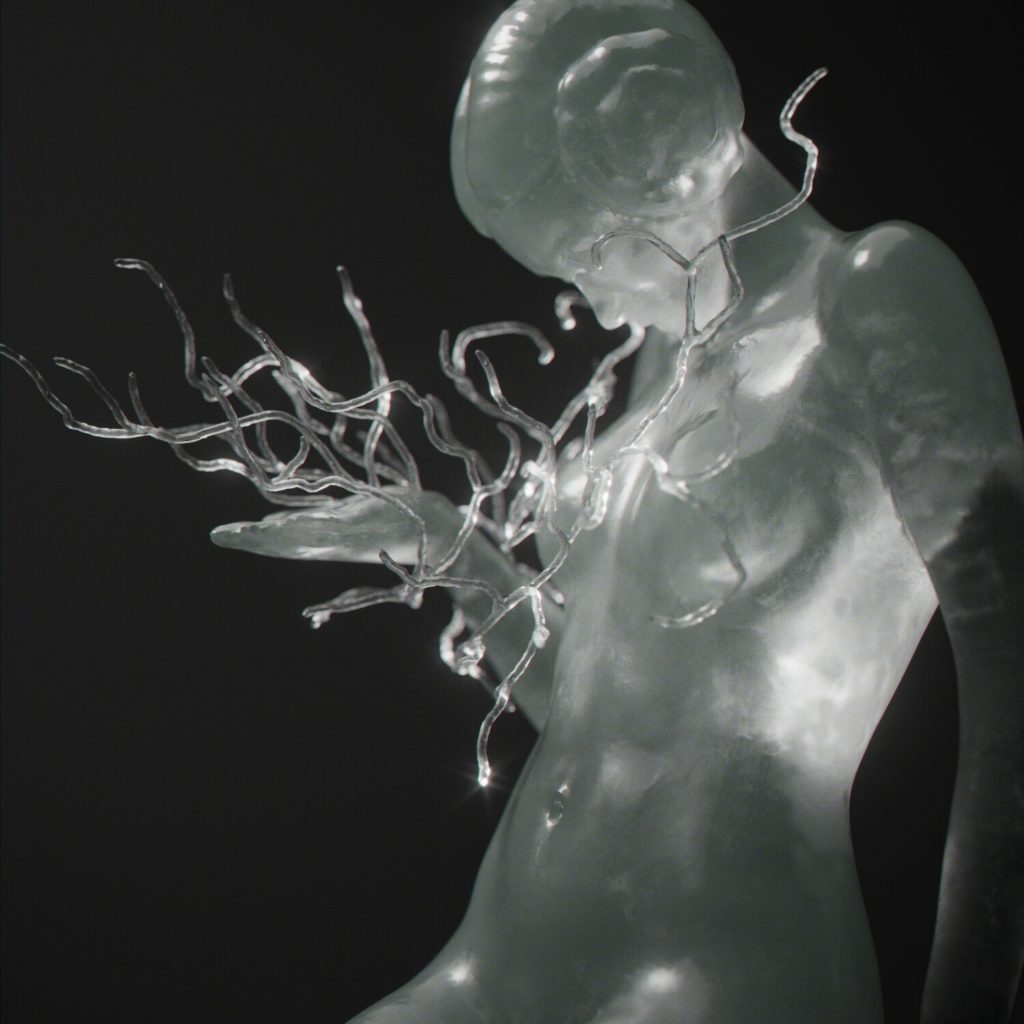
Emotion Streams No 03, 2021
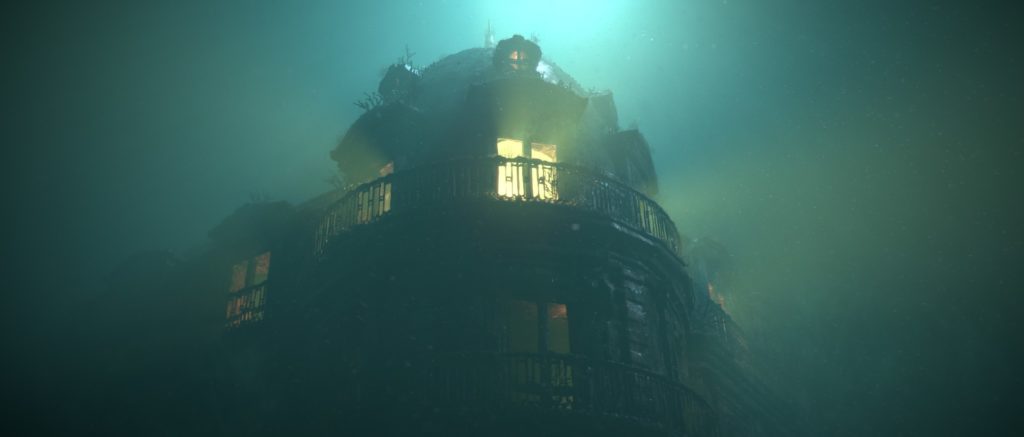
Intimate Cities, 2017 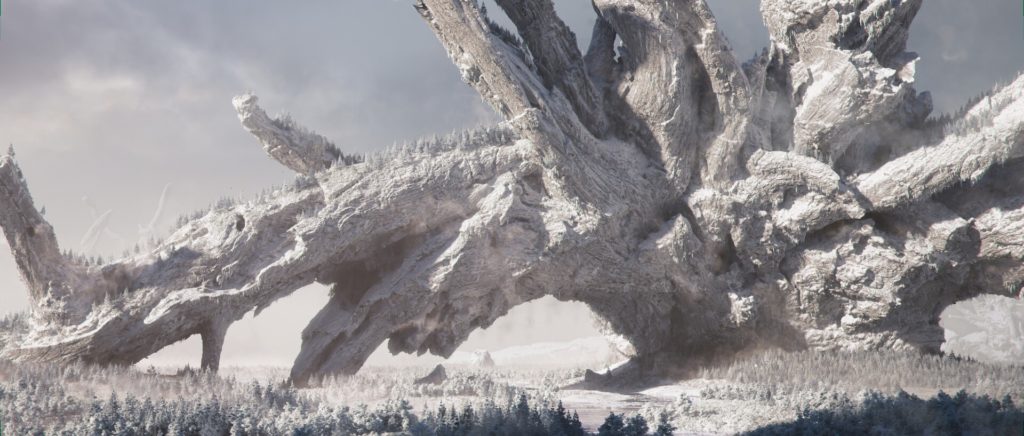
Sedimental Memory, 2021
It also involves engaging with lighting to enhance the perception of the volumes and the different properties of the material to make them almost graspable. Although virtual, my subjects always have an aesthetic that could be described as classic. I always walk on a thin line between classical and supernatural.
3.Where do you find inspiration for your art?
Inspiration most often comes from nature. A contrast in surface textures, lighting, shape or structure are things that catch my eye and make me want to adapt reality in some more surreal compositions. My second very big source of inspiration is the human body and I love to mix nature and human figure to personify nature, almost like if I was describing nature’s feelings.

4.Could you give us some insight into your creative process?
Research and development, teaching and creating goes hand in hand in my creative process. Sometimes an idea emerges and I find the proper tool to translate it into an artwork. And sometimes it goes the other way around, a new technique or tool calls for new types of visuals and I explore the new possibilities. For my personal creations, I don’t put any time limit, it allows me to push the boundaries of the universe I’m able to translate to the screen. I take time to craft every asset in great detail in order to convey this sense of realisme.
None of my artwork is photomontage, everything is modeled and painted in 3D as a sculptor would do in the “real world” then I assemble and light my scenes. It really much resembles a theater or a movie set with all the lights and camera but inside the computer. However I always ensure that the digital side of my artworks is not what characterizes them in the first place. Building a 3D picture requires a lot of technical knowledge and it can easily look dull.
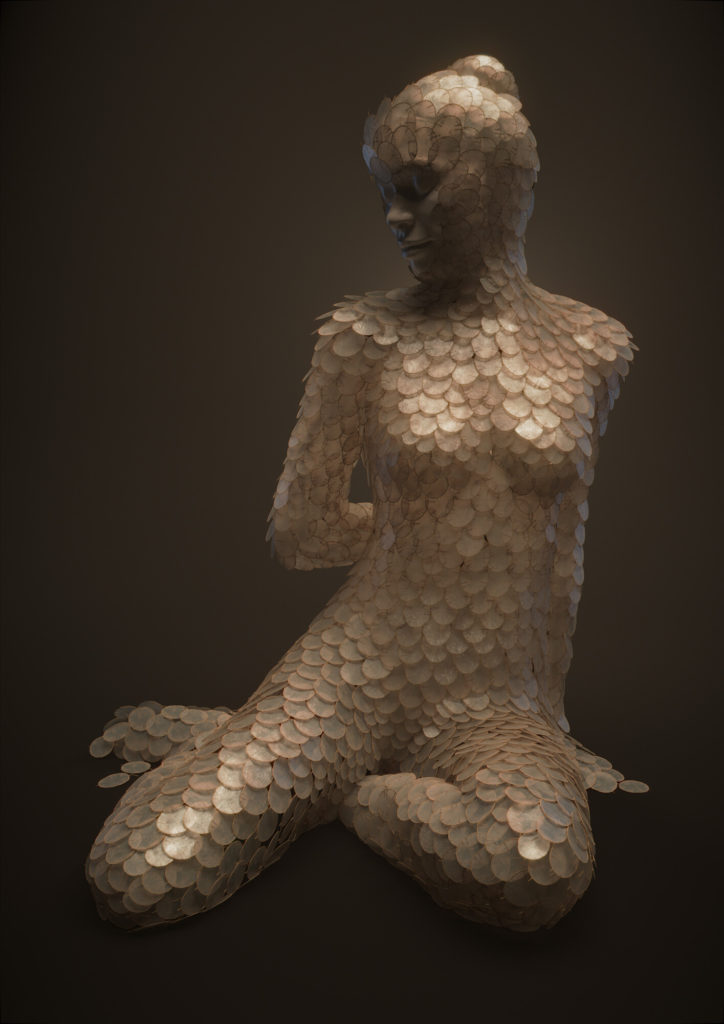
Flower Figures No 05, 2019 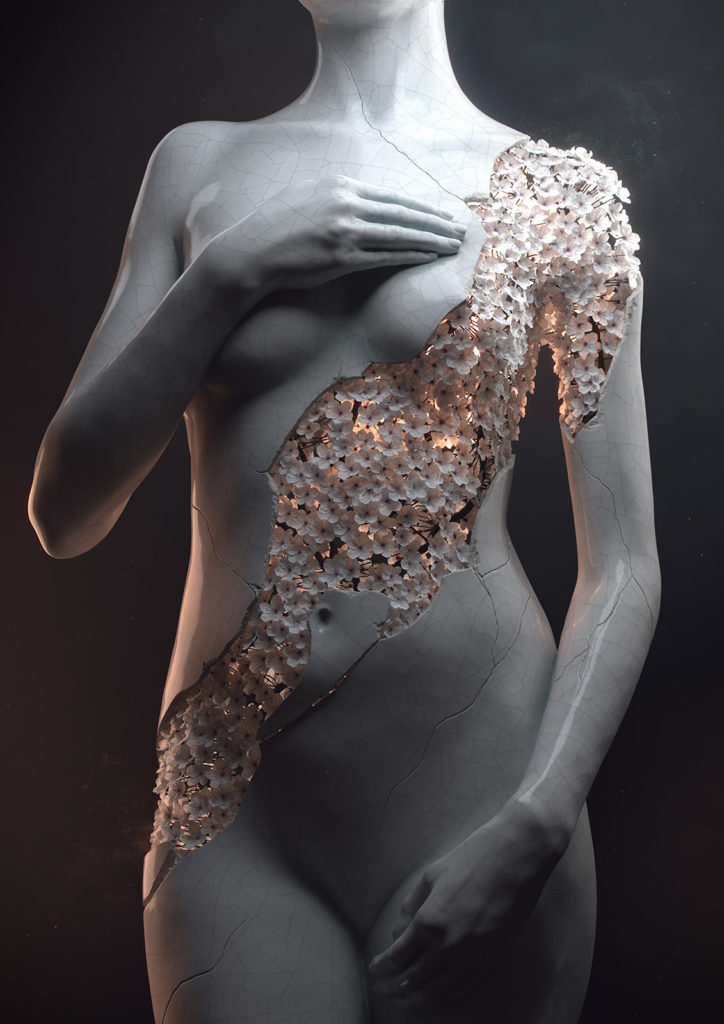
Flower Figures No 02, 2016 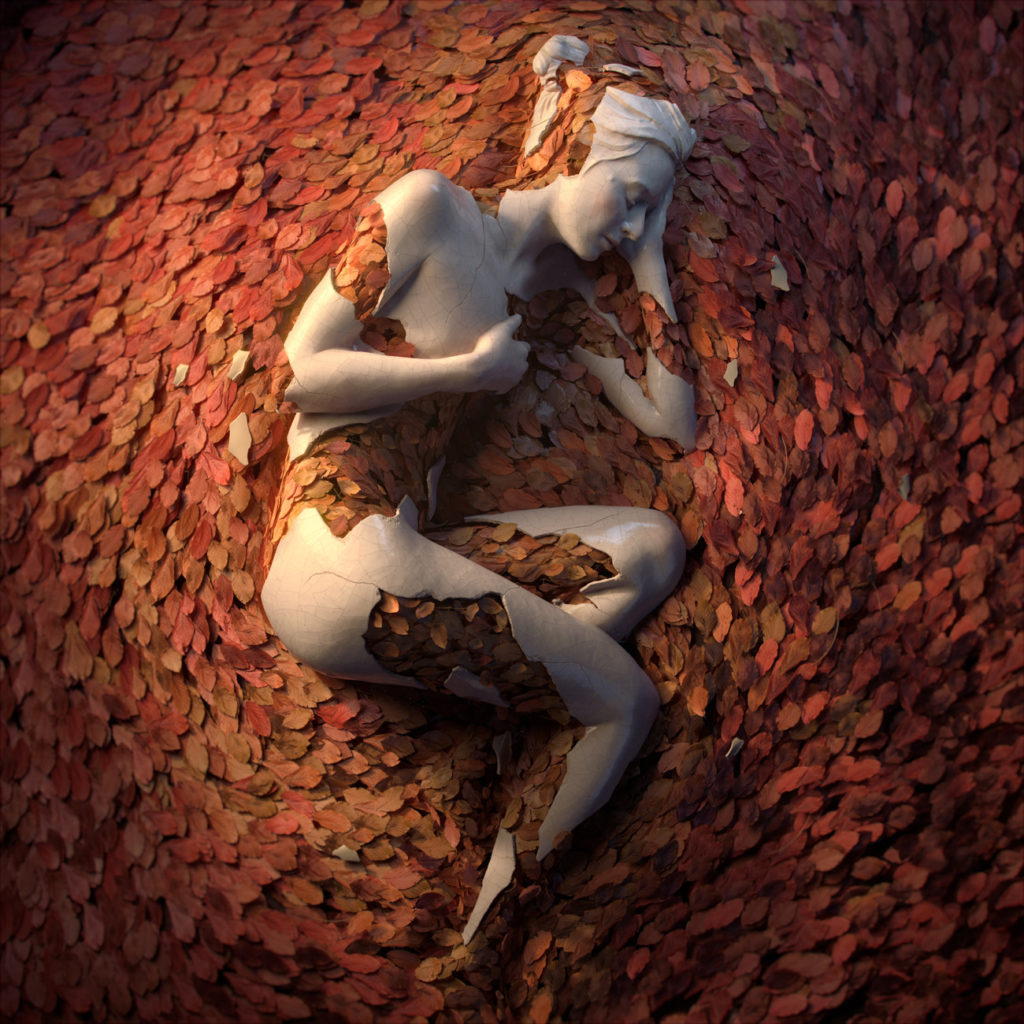
Fall-Asleep, 2016
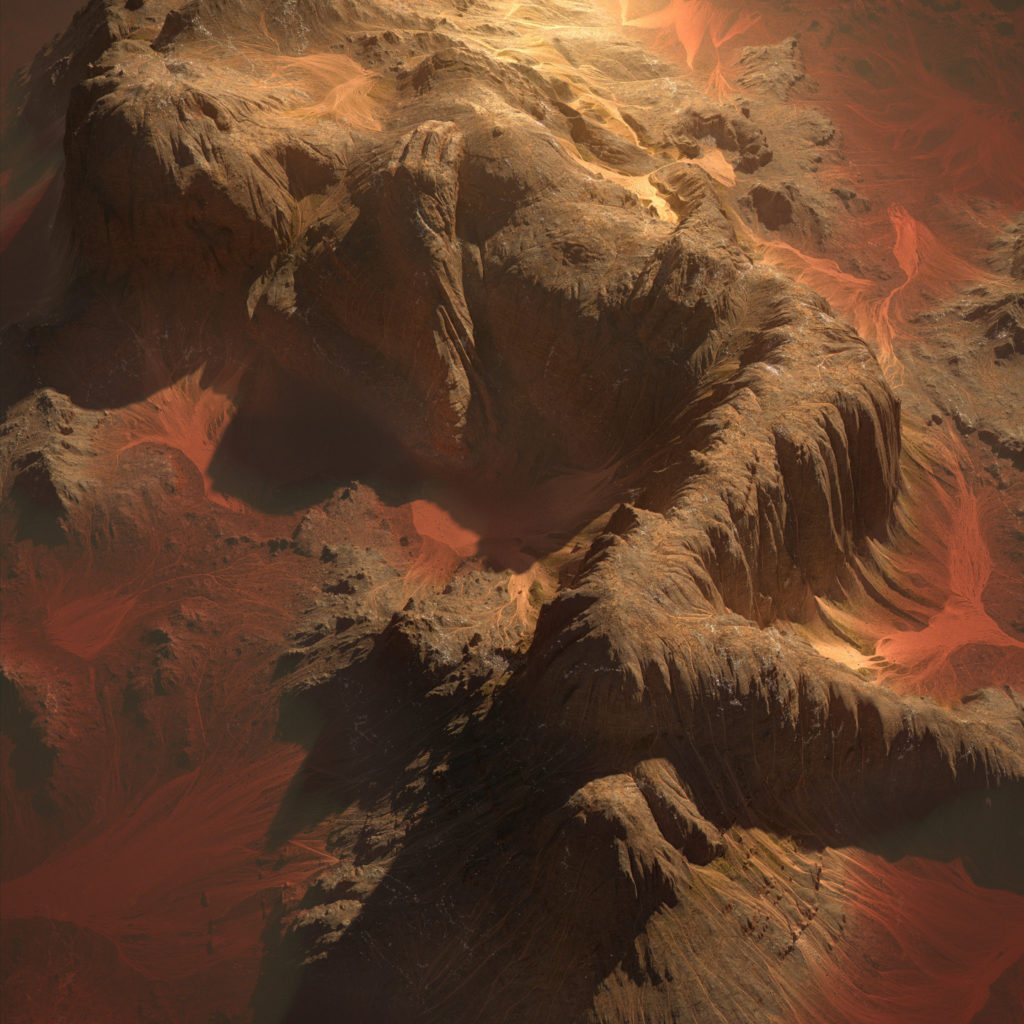
Peace and Tranquility to Mars No 02, 2016 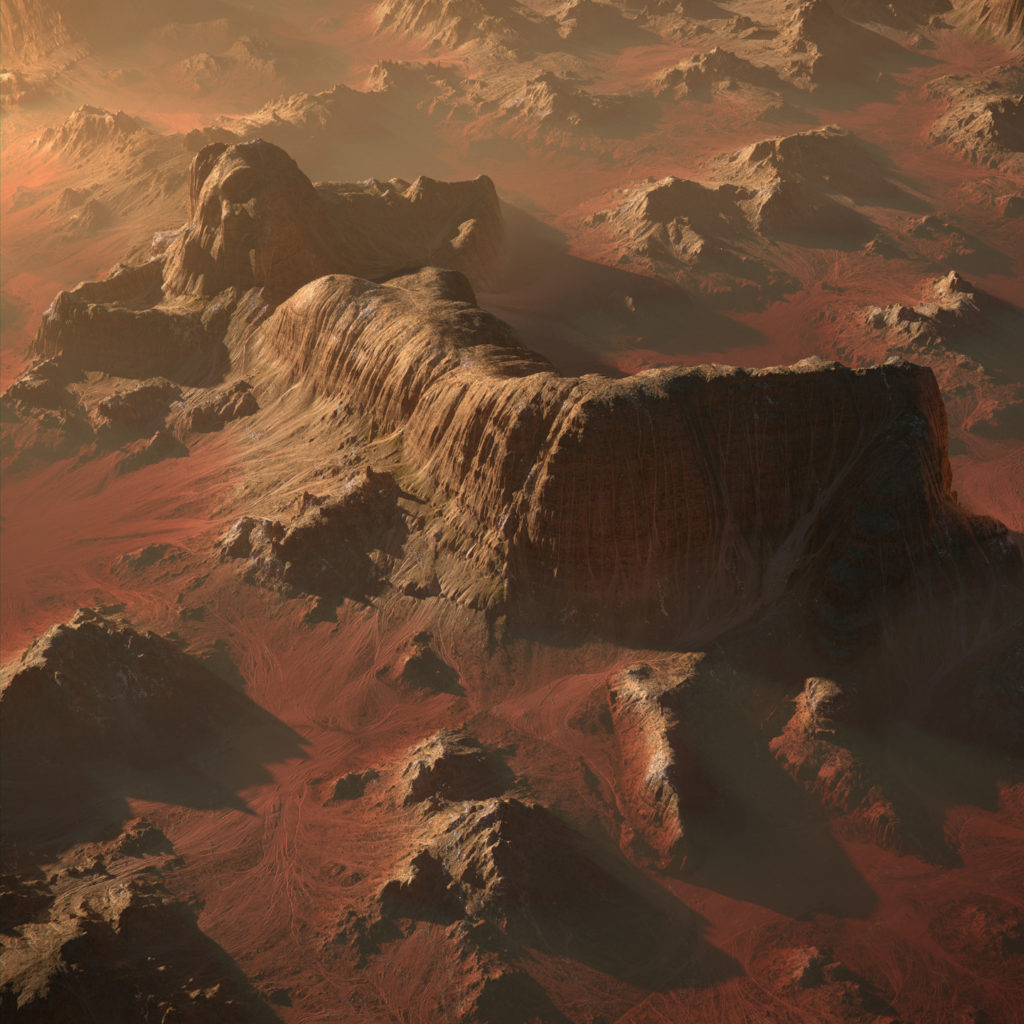
Peace and Tranquility to Mars No 03, 2016
So many steps are involved in the process of creating the final picture, I always need to have a clear view of what he aims to achieve. Also, where many traditional artists try to get a perfect control over reality, a digital artist fights against the digital perfection of 3D imagery, always adding some imperfections to get nearer from what makes a subject real and deep.
5.What are your future projects?
“Sedimental Memories No 07” is my very last artwork. Depicting a very ancient and quiet natural environment with some new layers of growing vegetation. The sleeping human figure both symbolizes the silence and peacefulness of this environment. It also makes us think that human beings are long gone or finally at peace with nature.
Lately, I’ve been exploring VR sculpting. Even though it sounds like quite a futuristic technology for sculpting, it actually brings back the gesture of the artist directly on its artwork. It is a very direct and pleasing way to create shapes. You may expect some more visual experimentation with this medium in the upcoming months. I might also experiment a bit more with interactive artwork, I’d love to be able to bring the viewer inside my creation and have him walk around these dreamy landscapes.
Interview by Fabio Pariante, journalist / Twitter – Instagram
MORE
Jean-Michel Bihorel on social networks: Instagram – YouTube – Twitter – Behance – Website
Jean-Michel Bihorel (Paris, 1988) is a French digital artist who, after studying animation in a French school, has been making digital images since 2008 and, since 2016, has devoted himself completely to his own artistic production. Always fascinated by the sense of matter and figurative realism, even if he belongs to the digital world, his interest in art was born thanks to the parents who are two artists who use traditional media.
Digital allows an infinite number of combinations, of opportunities to create works of art that speak with a realistic appearance: Bihorel is a digital artisan who meticulously takes care of every detail through software to interpret subjects between the classic and the supernatural. This is how the flower petals, submerged worlds and sometimes dark and surreal atmospheres, give the observer parallel interpretations between what it is and what it could be.
The artist’s sensitivity is based on the perceptions of the material which can be marble, ceramic, flowers and much more, but which in reality are only pixels that are sometimes imperfect to better define the sensation of real matter. Because to find its realism in the eyes of man, the work of art must be imperfect. Jean-Michel Bihorel lives and works in Rennes.
